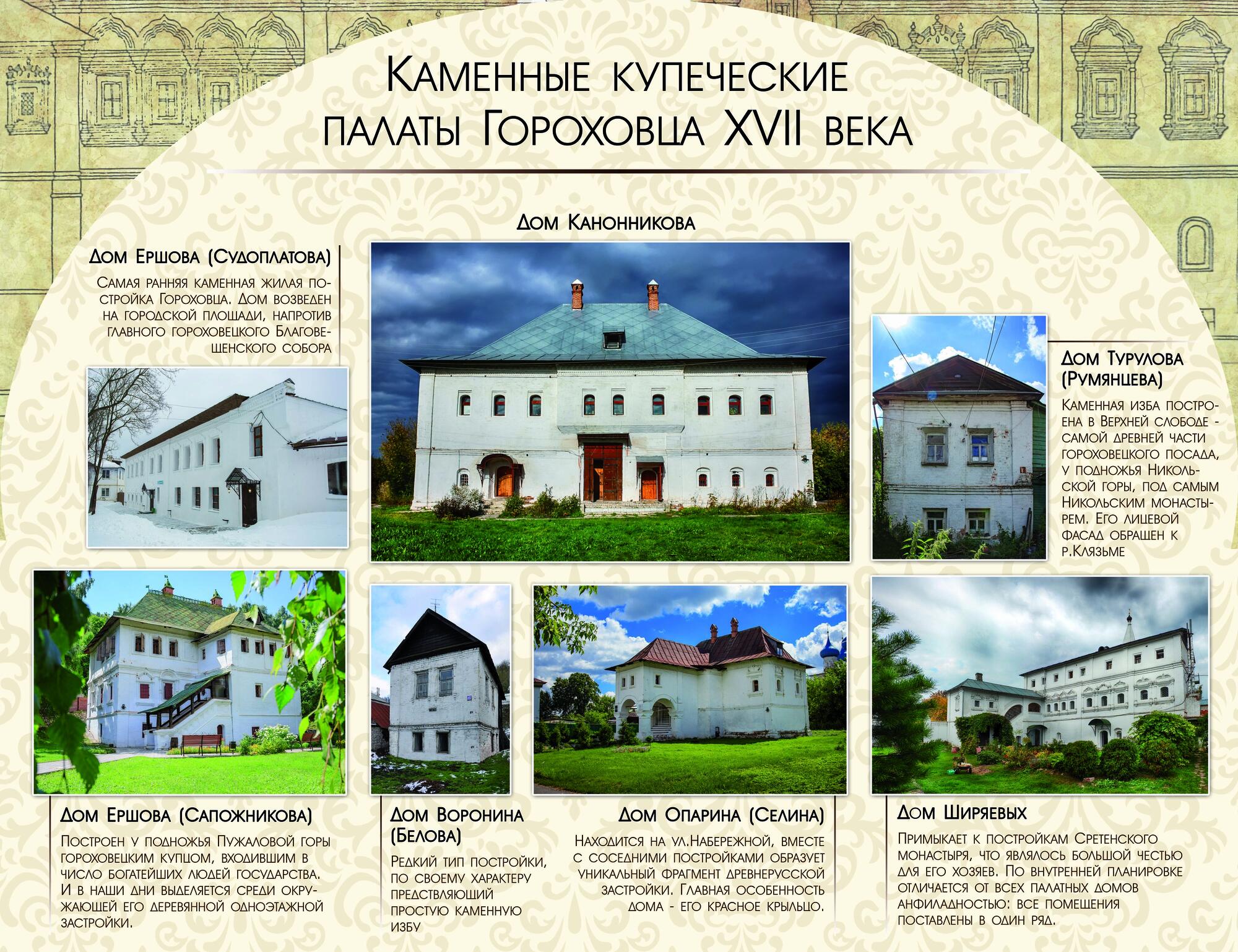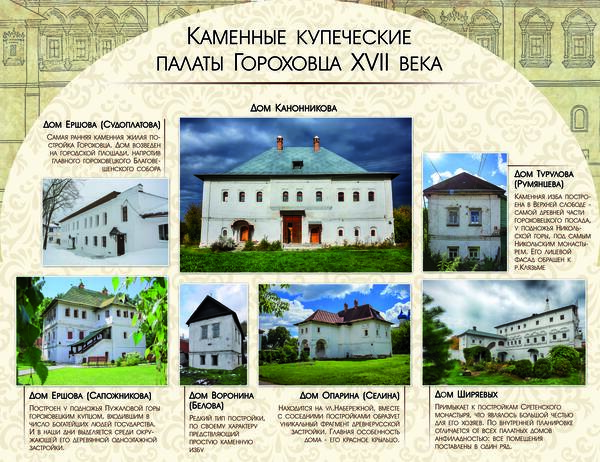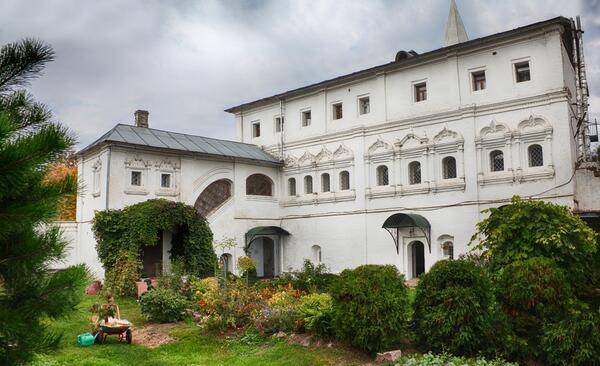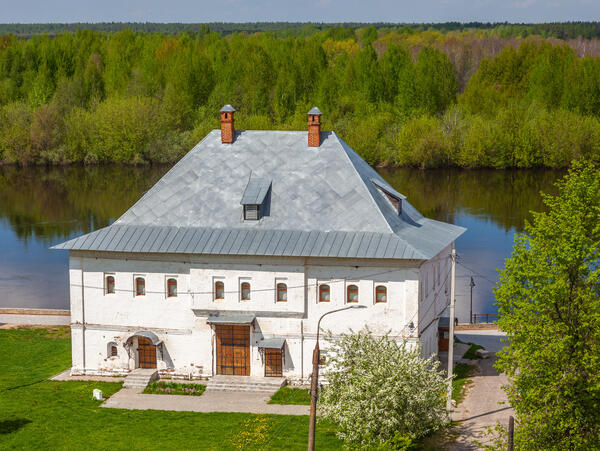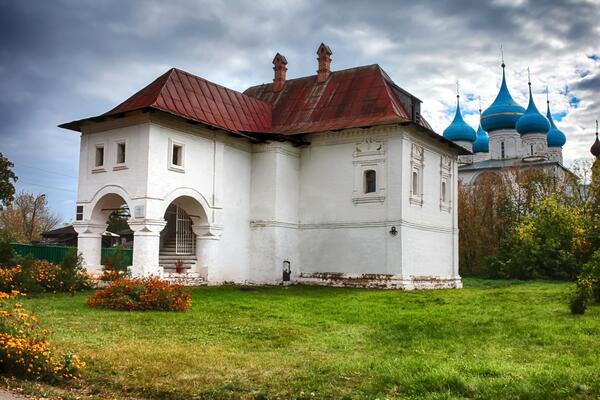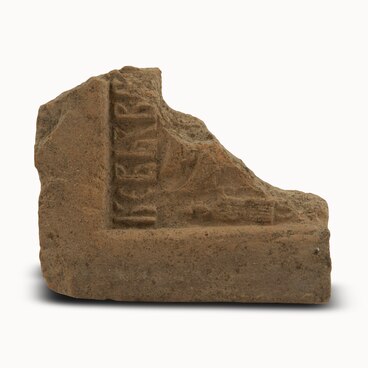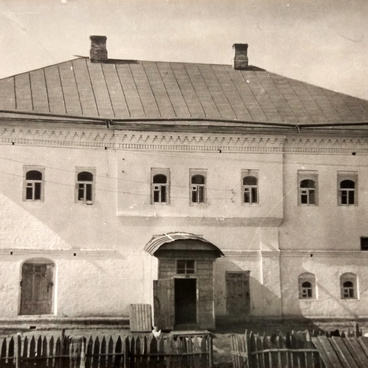The architectural ensemble of Gorokhovets is a monument of both art and urban planning. The complex of stone buildings was created in a very short period at the turn of the 18th century when Gorokhovets experienced its heyday.
The catalog of stone buildings in Gorokhovets features virtually all types of those buildings known in the architecture of the 17th century: several types of stone houses, pillarless churches, stepped, hipped bell towers, and pillared cathedrals.
The location of the town was perfect for trade, so merchants and craftsmen became predominant in the population of Gorokhovets. The appearance of the town began to change for the better because of the capital inflow. Rich contributions and donations from some eminent citizens made it possible to build the first brick buildings and churches.
Along with the stone churches, there was a demand for one-room dwelling houses and houses with a plan that was new for the late 17th century — houses that had a lot of rooms, a corridor arrangement, and an interior staircase. As of today, the territory of Gorokhovets can boast of having seven out of nineteen 17th-century stone dwellings that have been preserved in Russia. That is why Gorokhovets is called the capital of stone merchant palaty (which means “a dwelling house”).
The town had many craftsmen, who specialized in various aspects of construction and were closely followed by icon painters, muralists, and interior designers. Those craftsmen were the source of creativity, which was inspired by buildings in the capital and embodied in local monuments.
The house of Yershov (Sudoplatov), the house of Yershov (Sapozhnikov), the house of the Shiryayevs (Shumilina), and others have survived to this day. All of them have their own characteristics. The austere-looking house of Kanonnikov is the most significant one in terms of the square footage of the living space.
The house of Turulov (Rumyantsev) is a stone cottage in Verkhnyaya Sloboda — the most ancient part of the Gorokhovets settlement. It was erected at the foot of the hill called Nikolskaya Gora right near the St. Nicholas Monastery. The house of Voronin (Belov) is also a stone cottage. The house of Oparin (Selin), located on Naberezhnaya Street, is different from others because of its red porch.
The catalog of stone buildings in Gorokhovets features virtually all types of those buildings known in the architecture of the 17th century: several types of stone houses, pillarless churches, stepped, hipped bell towers, and pillared cathedrals.
The location of the town was perfect for trade, so merchants and craftsmen became predominant in the population of Gorokhovets. The appearance of the town began to change for the better because of the capital inflow. Rich contributions and donations from some eminent citizens made it possible to build the first brick buildings and churches.
Along with the stone churches, there was a demand for one-room dwelling houses and houses with a plan that was new for the late 17th century — houses that had a lot of rooms, a corridor arrangement, and an interior staircase. As of today, the territory of Gorokhovets can boast of having seven out of nineteen 17th-century stone dwellings that have been preserved in Russia. That is why Gorokhovets is called the capital of stone merchant palaty (which means “a dwelling house”).
The town had many craftsmen, who specialized in various aspects of construction and were closely followed by icon painters, muralists, and interior designers. Those craftsmen were the source of creativity, which was inspired by buildings in the capital and embodied in local monuments.
The house of Yershov (Sudoplatov), the house of Yershov (Sapozhnikov), the house of the Shiryayevs (Shumilina), and others have survived to this day. All of them have their own characteristics. The austere-looking house of Kanonnikov is the most significant one in terms of the square footage of the living space.
The house of Turulov (Rumyantsev) is a stone cottage in Verkhnyaya Sloboda — the most ancient part of the Gorokhovets settlement. It was erected at the foot of the hill called Nikolskaya Gora right near the St. Nicholas Monastery. The house of Voronin (Belov) is also a stone cottage. The house of Oparin (Selin), located on Naberezhnaya Street, is different from others because of its red porch.
